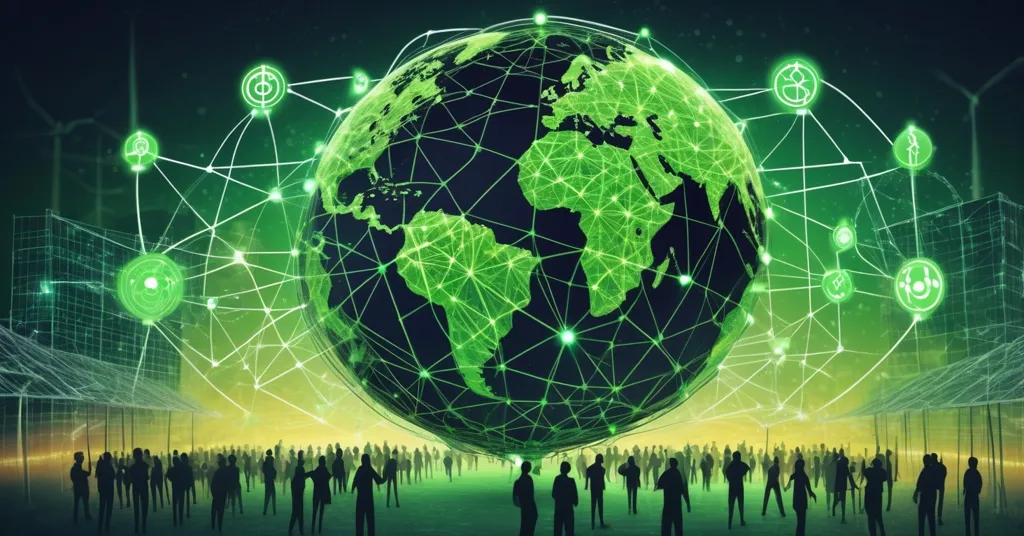Web3’s DePINs: The Key to Solving Global Sustainability Challenges

Web2 has Failed the Planet: It’s Up to Web3 to Fix It
Only 17% of the United Nations’ Sustainable Development Goals (SDGs) are on track for the 2030 deadline, highlighting the stark inadequacy of web2’s centralized approach to tackling global sustainability. Enter web3, heralding a new era of decentralized solutions through Decentralized Physical Infrastructure Networks (DePINs) that empower communities to drive real-world impact.
- Web2’s slow progress on UN SDGs
- DePINs as a decentralized solution
- Real-world applications in sustainability
- Role of blockchain and token incentives
The United Nations’ Sustainable Development Goals (SDGs) were designed to address critical global sustainability challenges by the year 2030. Yet, with only 17% on track, it’s clear that the centralized, top-down methods of web2 have failed us. These goals encompass a broad range of issues from poverty eradication to climate action, yet progress remains frustratingly slow. It’s like trying to fix a leaking boat with a teaspoon—ineffective and frustrating.
This is where web3 and Decentralized Physical Infrastructure Networks (DePINs) come into play. Think of DePINs as neighborhood watch groups for the planet, where everyone contributes and benefits. These networks harness the power of blockchain technology and token incentives to enable individuals to directly participate in building and maintaining sustainable infrastructure. Unlike the sluggish web2 model, DePINs empower people to take action, contribute data, and develop real-world solutions without waiting for governments or corporations to catch up.
Consider the case of decentralized networks monitoring urban noise pollution. By collecting data from community participants, these networks provide actionable insights for better urban planning and reduced environmental impact. Another compelling example is decentralized solar energy tracking, where communities optimize their solar power usage, enhancing the efficiency of the energy grid. These are not just theoretical concepts; they’re real solutions in action.
A report by Antier Solutions underscores the potential of DePINs to help achieve global net-zero emissions goals. By fostering collaborative innovation and enhancing transparency, DePINs offer governments and corporations a way to scale their sustainability efforts. Imagine a world where businesses and local governments work hand-in-hand with communities to develop sustainable energy projects—it’s not just possible; it’s happening.
Daniel Ferraro, the CMO at Silencio Network, a DePIN dedicated to reducing noise pollution, passionately argues that the true drivers of sustainability will be individuals, not politicians or corporate boardrooms.
“The web2 approach has failed to meet the urgency of the sustainability crisis. We need a new model—one that is decentralized, community-driven, and built to empower individuals rather than institutions.”
Ferraro continues,
“DePINs allow individuals to take action, contribute data, and build real-world solutions without waiting for governments or corporations to catch up.”
This approach transforms sustainability into a collective effort where everyday people can make a tangible difference.
While the potential of DePINs to revolutionize sustainability is undeniable, it’s crucial to remain grounded in reality. The technology is still in its infancy, and widespread adoption faces hurdles such as regulatory barriers and public skepticism. Yet, the rewards are too significant to overlook. Blockchain and token incentives within DePINs act like digital carrots, motivating participants to engage and contribute. Smart contracts further enhance trust and efficiency by automating agreements and transactions within these networks.
Looking to the future, the scalability and future-proofing of DePINs are essential for ensuring their long-term impact. As more organizations integrate these networks into their existing infrastructures, we can expect a seamless transition that amplifies the effectiveness of sustainability initiatives. The mainstream embrace of web3 technologies will be pivotal in accelerating this shift, creating a more inclusive and effective sustainability movement. Integration of DePINs by governments and corporations is already underway, showing promising results.
Key Takeaways and Questions
- What are the limitations of web2 in addressing sustainability challenges?
Web2’s centralized, top-down approaches have been slow and ineffective, with only 17% of the SDGs on track for 2030.
- How do DePINs address these limitations?
DePINs empower individuals through decentralized systems, using blockchain and token incentives to create community-driven sustainability solutions.
- What are some real-world examples of DePINs in action?
DePINs are used for urban noise pollution monitoring and decentralized solar energy tracking, among other applications.
- How can governments and corporations integrate DePINs into their sustainability efforts?
By adopting DePINs, governments and corporations can enhance transparency and scalability in their initiatives.
- What role do individuals play in the sustainability movement through web3?
Individuals can become active contributors to sustainability efforts through DePINs, driving real-world impact and making the movement more inclusive.
Despite the challenges, the potential of web3 to revolutionize sustainability is too great to ignore. As we move forward, the urgency of the situation demands action. Web3 offers not just a new tool but a new paradigm, one that could finally steer us towards a more sustainable future. It’s time to embrace this decentralized revolution and let the power of the community lead the way. Web2 has failed the planet, and it’s up to web3 to fix it.



